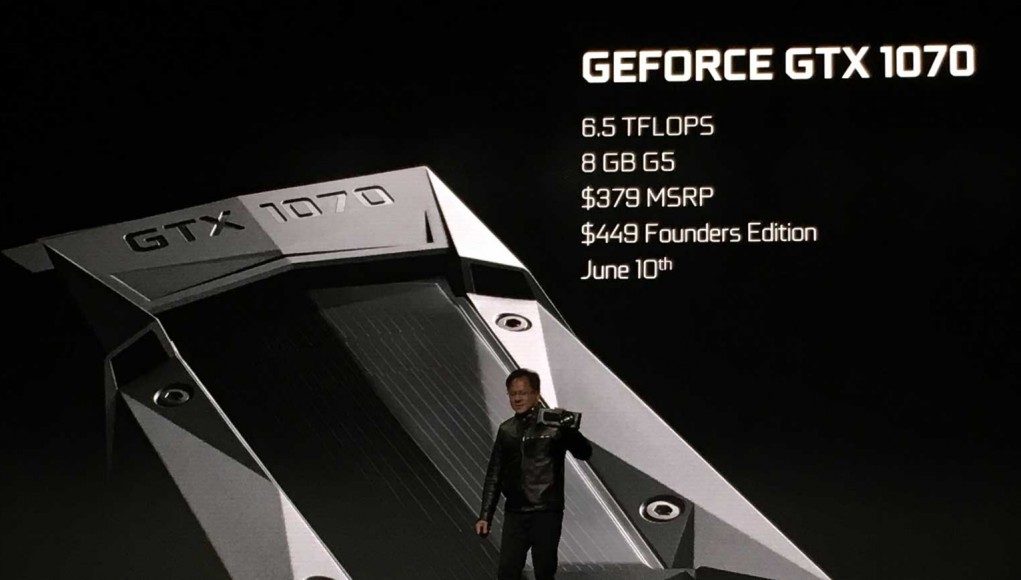Nvidia just announced the GTX 1070, a card based on the new Pascal 16nm FinFET architecture that outperforms the Titan X and it’ll retail for $379. Plus, you’ll be be able to buy it from June 10th.
We were expecting big things from Nvidia at their special event in Austin, Texas today and they do seem to have delivered in spades. Hot on the heels of the announcement of a new flagship GPU based on the company’s new 16nm ‘Pascal’ process, the GTX 1080. But NVIDIA’s CEO saved the best for last.
The entry-level GTX 970 will be replaced come June 10th this year with the new Pascal-based GTX 1070, a card that, according to Nvidia, outperforms the current flagship GPU the ‘Maxwell’ based Titan X but will be available to buy from June 10th for just $379, not far from the current GTX 970 costs right now.
The current GTX 970 is cited in both Oculus Rift and HTC Vive recommended specifications for Nvidia cards, now it looks as if the entry-level card of choice has been soundly usurped.
This story is breaking and will develop.
Disclosure: Nvidia paid for travel and accommodation for one Road to VR correspondent to attend an event where information for this article was gathered.







